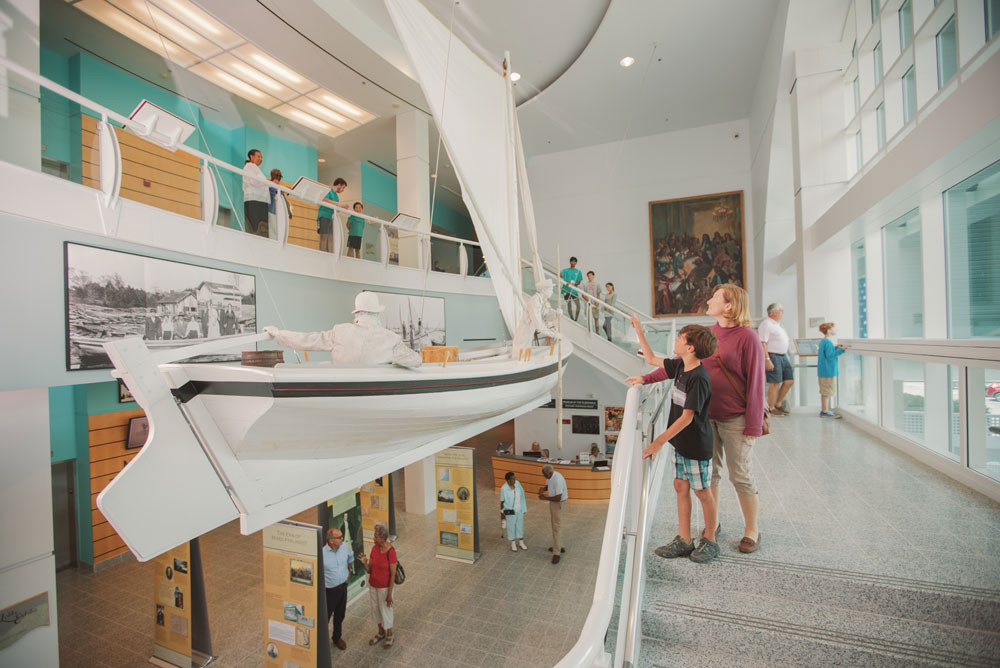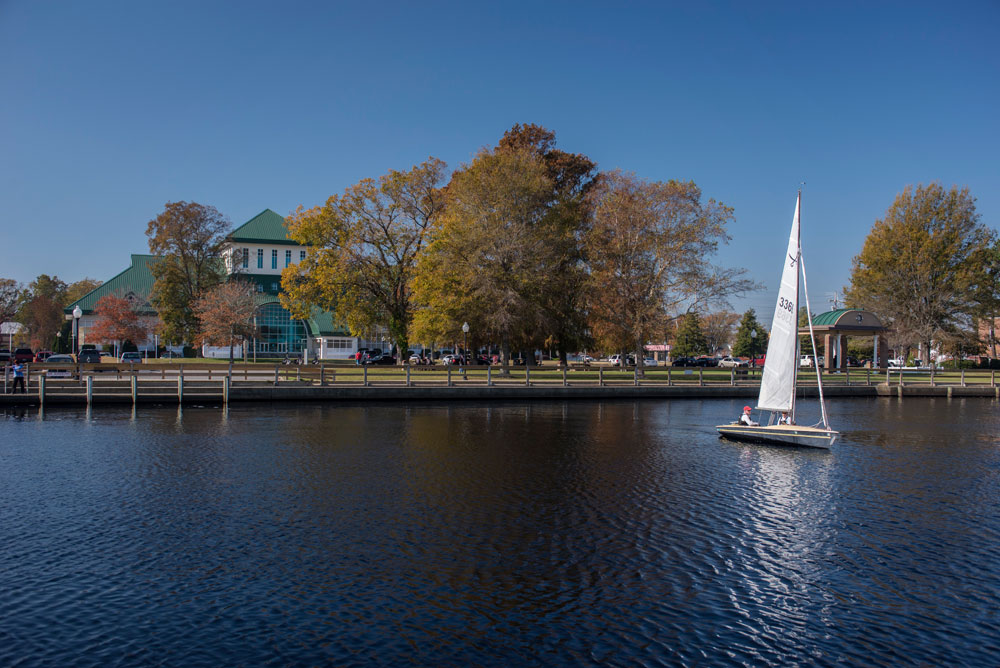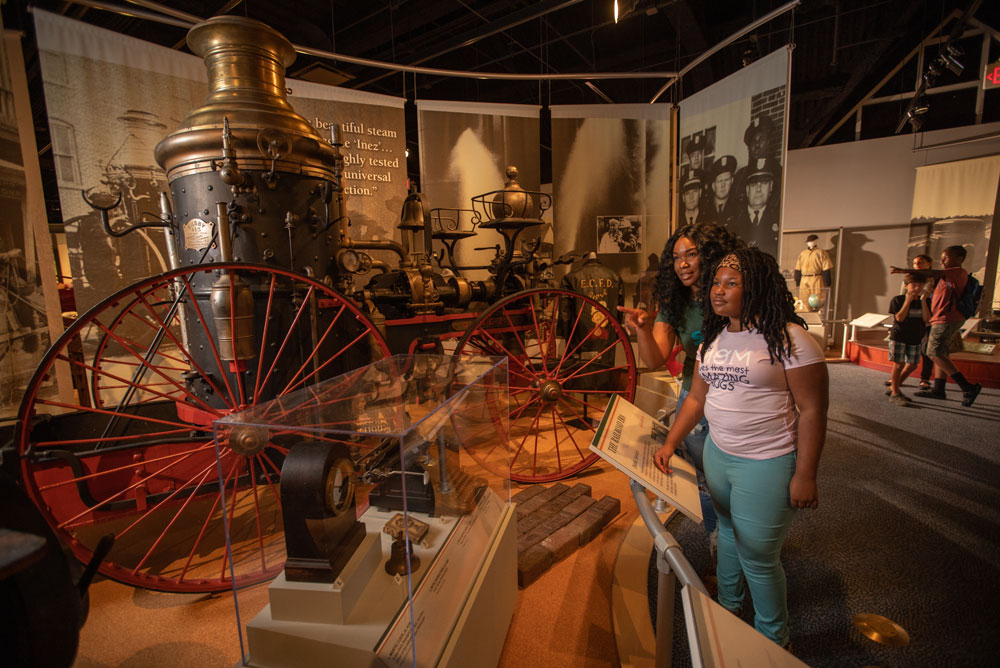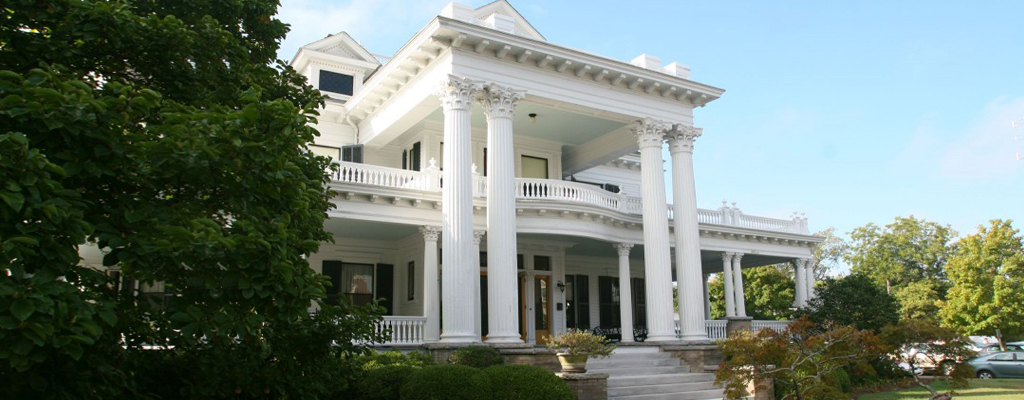“Stop looking at the walls. Look out the window.” –actor/producer Karl Pilkington
It’s little thought of by most folks that the words “museum” and “muse” share the same Greek etymology. But the original museums (at least as we think of them, originating in 4th century BC Athens, and later in Alexandrian Egypt under Ptolemy I) weren’t designed to merely curate and catalog cultural, historical, anthropological, and artistic works and materials for the purposes of education, but also to inspire future generations. Museums should be a window to the world we live in—a fresh motivation to recapture what was best about our past or to act boldly in the creation of a better future. The effect of a great museum experience is that its inspiration begins within its walls and carries forward once you leave them.  By that measure, Museum of the Albemarle (MoA) is an archetypal museum and one that should inspire not only its nearest neighbors in Elizabeth City, but folks across the northeastern North Carolina region that shares its namesake as well as travelers passing through. For starters, the museum is beautifully designed and optimally located on Water Street, near the downtown waterfront. While many museums contain works of art which belie their sometimes unimpressive exteriors, MoA’s gorgeous architecture is in itself stunning, with its iconic Kelly green roof and large windows with views of the Pasquotank River waterfront. MoA serves as the northeastern regional branch of the NC Museum of History and is part of the NC Department of Cultural Resources, committed to preserving the state’s
By that measure, Museum of the Albemarle (MoA) is an archetypal museum and one that should inspire not only its nearest neighbors in Elizabeth City, but folks across the northeastern North Carolina region that shares its namesake as well as travelers passing through. For starters, the museum is beautifully designed and optimally located on Water Street, near the downtown waterfront. While many museums contain works of art which belie their sometimes unimpressive exteriors, MoA’s gorgeous architecture is in itself stunning, with its iconic Kelly green roof and large windows with views of the Pasquotank River waterfront. MoA serves as the northeastern regional branch of the NC Museum of History and is part of the NC Department of Cultural Resources, committed to preserving the state’s  historic sites. For that reason, the exhibits, paintings, and installations tell the complex, troubling, and inspirationally resilient stories of colonists, indigenous peoples, and enslaved Africans and how the Albemarle region was shaped by their conflicts and, eventually, collaboration.
historic sites. For that reason, the exhibits, paintings, and installations tell the complex, troubling, and inspirationally resilient stories of colonists, indigenous peoples, and enslaved Africans and how the Albemarle region was shaped by their conflicts and, eventually, collaboration.
Each piece and exhibit tells a riveting story, including the enormous and exquisitely detailed mural near the entrance which dramatically captures King Charles II’s establishment of the region’s namesake, upon awarding a tract of land to George Monck, Duke of Albemarle, one of the Lord’s Proprietors. Next, one approaches the meticulously preserved 1904 “North Carolina Shad Boat” which is suspended delicately in mid-air above the entrance between the twin ascending staircases. Then, to the brilliant and intricately researched “Our Story” exhibit which features the 350 year-old story of how the Albemarle region has evolved from homeland to many indigenous tribes, through colonial times as an important port central to shipping cargo across the colonies, all the way through its modern contributions to the American military (and current home of America’s largest Coast Guard base) and North Carolina’s tourism economy.

The MoA is a remarkable attraction and is open 9 am-5 pm Monday-Saturday, with free admission to the public and a well-stocked gift shop for those hoping to commemorate the experience. It is also located near several restaurants, coffee houses, and shops for those hoping to make a day trip out of the excursion. Finally, the MoA often hosts receptions, festivals, and events as a beautiful backdrop to community gatherings, and is available for rent to interested parties.
Those from the region will be freshly inspired by their home, its people, and its rich history. Those passing through or visiting for a spell will be motivated to learn more about this region and its people, and perhaps lament waiting so long to come to know the region’s story. Regardless, the MoA is a deep dive into the Albemarle region’s past, and for those who heed its lessons, a window into its future.
 Will Broussard is a higher education administrator, professor, and essayist. He recently moved to Elizabeth City from Acadiana (a heavily Black creole and French-influenced region of south Louisiana). His essays, op-eds, and reflections on college writing, HBCU leadership, college athletics, and Louisiana politics have appeared in peer-reviewed journals, magazines, newspapers, and least-interestingly (but much more snarkily) on his Twitter feed (@DeadLecturer).
Will Broussard is a higher education administrator, professor, and essayist. He recently moved to Elizabeth City from Acadiana (a heavily Black creole and French-influenced region of south Louisiana). His essays, op-eds, and reflections on college writing, HBCU leadership, college athletics, and Louisiana politics have appeared in peer-reviewed journals, magazines, newspapers, and least-interestingly (but much more snarkily) on his Twitter feed (@DeadLecturer).

Downtown Elizabeth City’s residential area boasts a plethora of houses of historical and architectural interest. Here is a look at five stand-out homes on the walking tour... READ MORE

Now is the perfect time to plan a Labor Day holiday trip to northeastern North Carolina, a welcoming cluster of small towns with offerings for the foodie, the history buff, the sportsman and the arts and antiques enthusiast. ... READ MORE